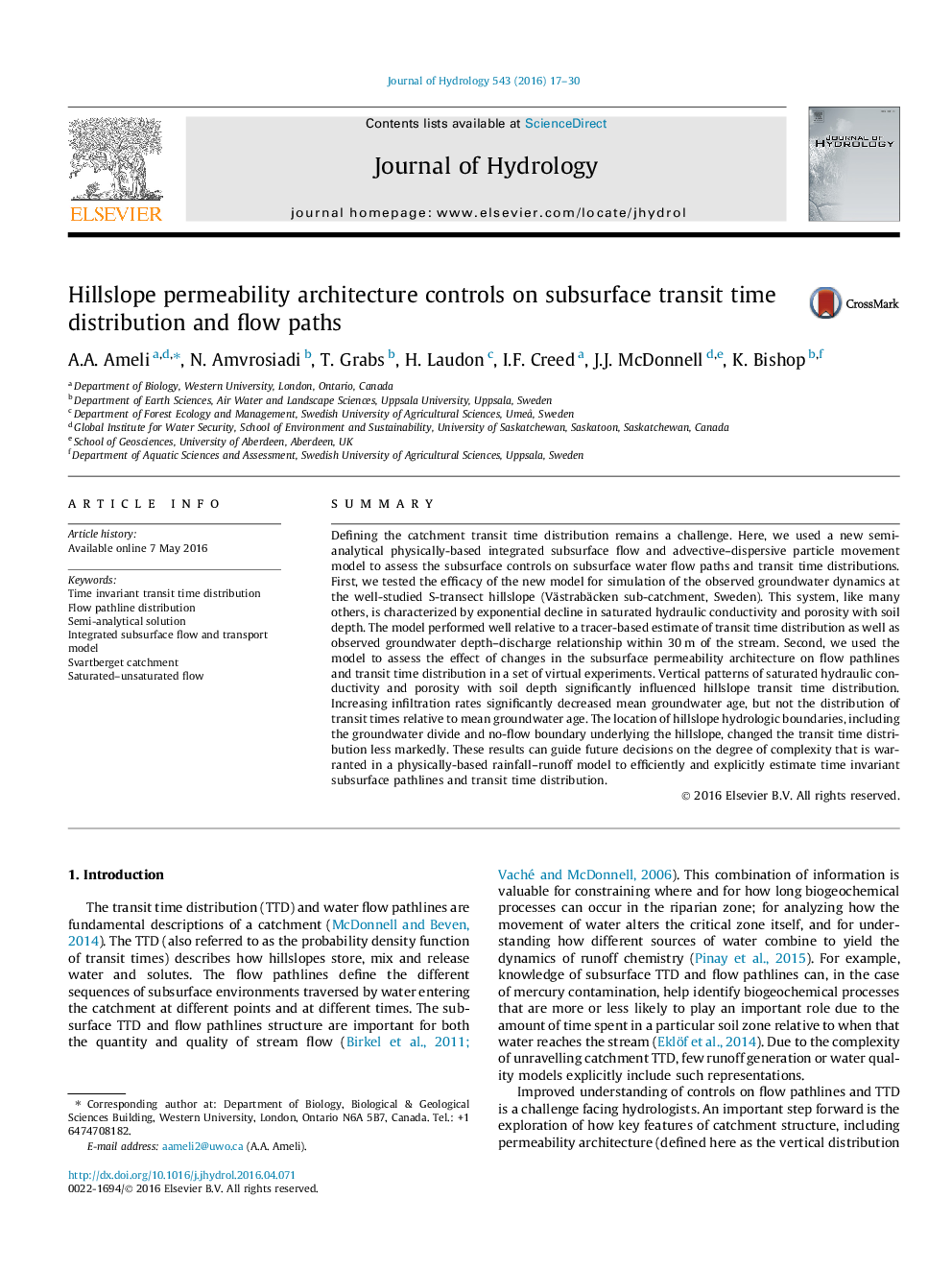| کد مقاله | کد نشریه | سال انتشار | مقاله انگلیسی | نسخه تمام متن |
|---|---|---|---|---|
| 5770945 | 1413307 | 2016 | 14 صفحه PDF | دانلود رایگان |

- The new approach was able to reproduce hillslope flow and transport dynamics.
- Macro scale subsurface heterogeneity significantly impacts the shape of TTD.
- Infiltration rate impacts MTT but not the shape of dimensionless TTD.
- Impact of hydrological boundaries on TTD depend on subsurface heterogeneity level.
- The pore scale micro heterogeneity only slightly influences the TTD.
SummaryDefining the catchment transit time distribution remains a challenge. Here, we used a new semi-analytical physically-based integrated subsurface flow and advective-dispersive particle movement model to assess the subsurface controls on subsurface water flow paths and transit time distributions. First, we tested the efficacy of the new model for simulation of the observed groundwater dynamics at the well-studied S-transect hillslope (Västrabäcken sub-catchment, Sweden). This system, like many others, is characterized by exponential decline in saturated hydraulic conductivity and porosity with soil depth. The model performed well relative to a tracer-based estimate of transit time distribution as well as observed groundwater depth-discharge relationship within 30Â m of the stream. Second, we used the model to assess the effect of changes in the subsurface permeability architecture on flow pathlines and transit time distribution in a set of virtual experiments. Vertical patterns of saturated hydraulic conductivity and porosity with soil depth significantly influenced hillslope transit time distribution. Increasing infiltration rates significantly decreased mean groundwater age, but not the distribution of transit times relative to mean groundwater age. The location of hillslope hydrologic boundaries, including the groundwater divide and no-flow boundary underlying the hillslope, changed the transit time distribution less markedly. These results can guide future decisions on the degree of complexity that is warranted in a physically-based rainfall-runoff model to efficiently and explicitly estimate time invariant subsurface pathlines and transit time distribution.
Journal: Journal of Hydrology - Volume 543, Part A, December 2016, Pages 17-30